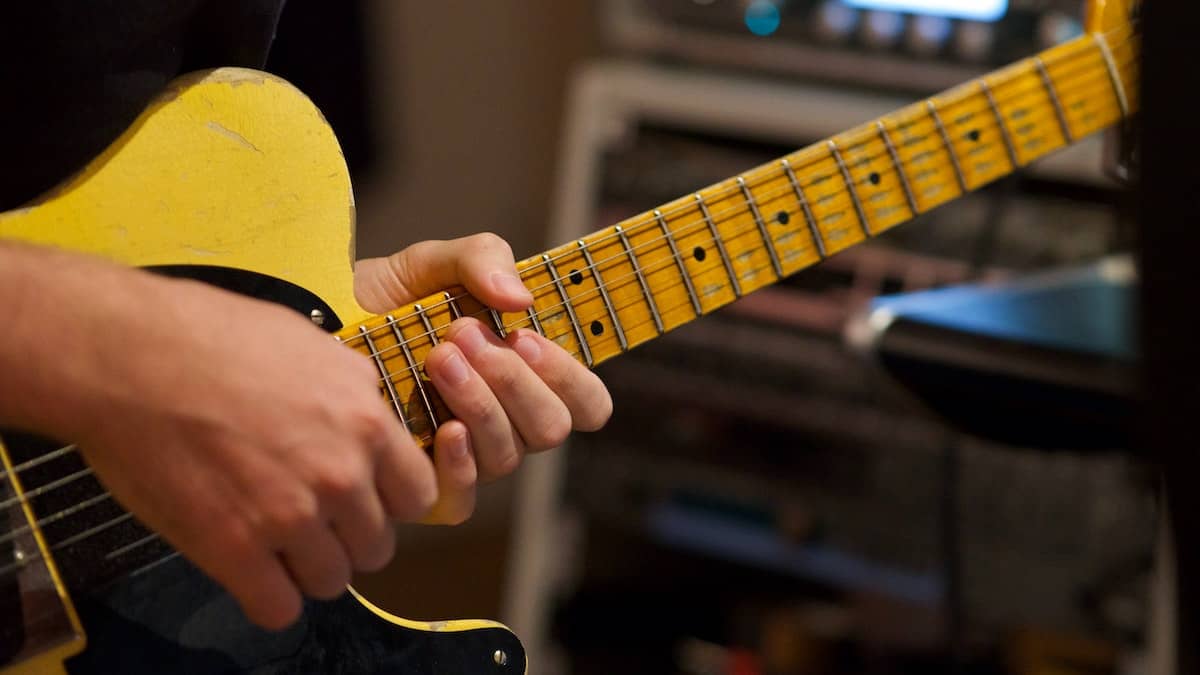Jazz Guitar Lessons
New JGT Lesson: Triad Inversions

In this JGT lesson, jazz guitarist Leon Rodriguez discusses triad inversions and why it’s all about triads…
In a taped conversation between two of my guitar heroes, George Van Epps told Ted Greene something in passing that stuck to me and rings truer for me every year since I heard it. He said,” … Yes, well it’s all about triads isn’t it?”. To which Ted Greene laughed and said, “Yes, it sure is!” Apologies if I missed a nuance in the verbatim. The point is, that’s huge verification between masters. We therefore endeavor to heed good direction. Let’s continue our conversation on triads regarding inversions.
We talked about using triad inversions to cycle in 4ths. Our attention was on the bass note because that note identifies which inversion it is. Then we focused on which is the top note to harmonize in a I IV V progression with attention to melody. Now we’ll focus on how the fretboard presents inversions in an effort to organize and unify. Arguably we can invert any group of notes. Today it’s a major triad.

An inversion is a cycle of notes that are the members of a given chord.
In this case, a B flat major triad. Think of a Ferris wheel. No matter how we revolve that cycle, the triad retains that order. The red arrows give us a focus as to which note must move 1 octave to advance the inversion cycle like rotating a Ferris wheel by 1 cart. In measure 1, from Root position, the top note F is cycled to the bass inverting the triad to a 2nd Inversion triad, then top note D cycles to bass to create a 1st inversion, the Bb is cycled to return the triad to Root position exactly one octave lower. See it? Put this in your hands.
Across the Strings descending (Vertical)

Anything we do vertically we should attempt to replicate horizontally. Moving across the strings we can focus on the static common tones to finger the octave jump. This time horizontal thinking is asking us to remember the interval of the next voicing to move our hands. Just spell the triad across the strings focusing on either the top note or the bass note depending on your goal.
Across the Frets ascending (Horizontal)

The next thing to notice is that although the fingerings are generally advancing up the frets, one is ascending the other is descending in pitch. Since the top note creates an arpeggio across the inversions, try your favorite triad lick in as many combinations as you can in both directions while identifying Root, 3rd and 5th at both ends of the stack as you go. Many controlled possibilities; controlled being the operative word here. Have fun with it.
To be continued…Books and On-Line Private Lessons available at www.LeonRodriguezGuitar.com/shop
-
Jazz Guitar Lessons2 weeks ago
New JGT Guitar Lesson: Analyzing “Without A Song”
-
Jazz Guitar Lessons4 weeks ago
New JGT Guitar Lesson: Considering “Falling Grace”
-
Artist Features1 week ago
New Kurt Rosenwinkel JGT Video Podcast – July 2024
-
Artist Features3 weeks ago
JGT Talks To Seattle’s Michael Eskenazi



















